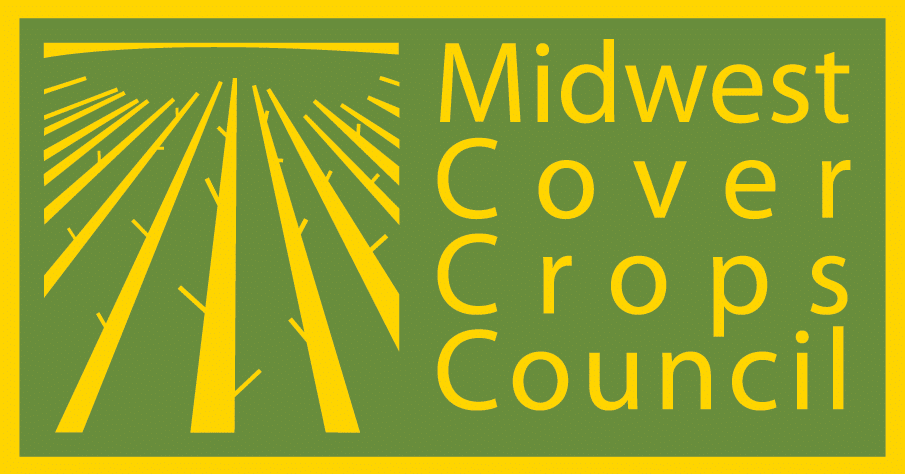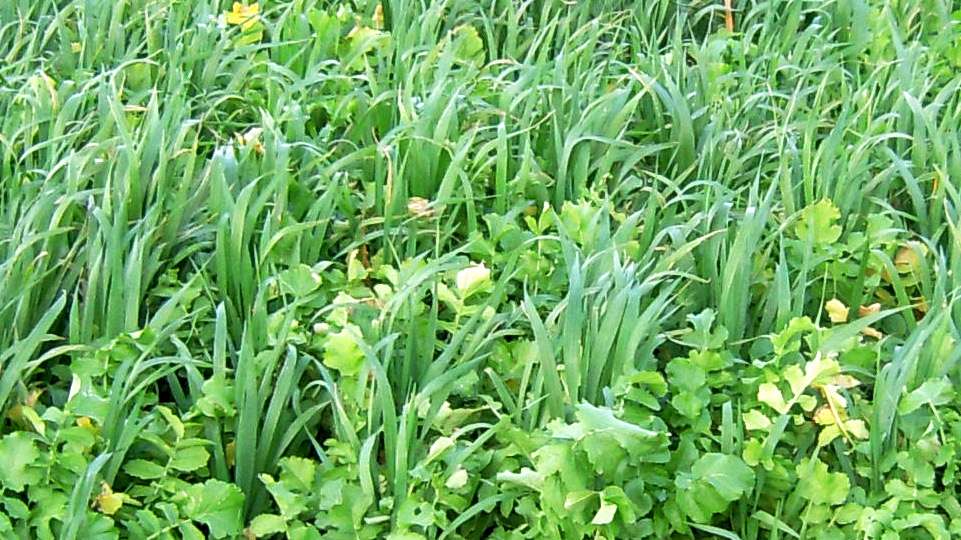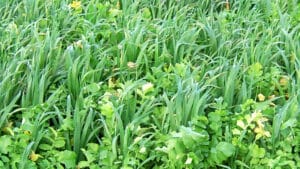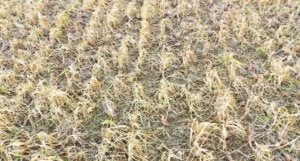Kim Cassida and Joe Paling – Michigan State University Extension
February 2020
2019 MSU Cover Crop Variety Test Report
Source link here.

Kim Cassida and Joe Paling – Michigan State University Extension
February 2020
2019 MSU Cover Crop Variety Test Report
Source link here.

University of Wisconsin, Nutrient and Pest Management Program
Cover Crop Termination Options
Source link here.

Daniel Smith, Matt Ruark, Shawn Conley – University of Wisconsin-Madison and University of Wisconsin Extension
August 2017
Herbicide Considerations for Cover Crop Establishment
Source link here.

Midwest Cover Crops Council (MCCC-117)
This publication is intended to provide a starting point for farmers who are new to growing cover crops. With experience, farmers may fine-tune the use of cover crops for their systems.
The following recipe provides an introductory approach to integrating a cover crop into a soybean-corn rotation. Often the easiest place to begin is to plant a cover crop ahead of a soybean cash crop following corn, so consider starting with the companion recipe titled Post Corn, Going to Soybean (publication MCCC-116; see Resources).


Pure live seed (PLS) indicates the amount of seed in the container that is capable of developing into seedlings. To calculate PLS, the percentage of pure seed listed on the seed label of a cultivar is multiplied by the percent germination (also listed on the seed label). For example: 90% pure seed of the cultivar x 80% germination = 72% PLS.
To determine how much seed to plant, divide 100 by the percentage PLS (72 in this example): 100 ÷ 72 = 1.4. Therefore, 1.4 pounds of seed with a purity of 90% and a germination of 80% would be needed for each pound specified in the desired seed mixture.
Post Corn, Going to Soybean: Use Cereal Rye (Ohio Cover Crop Recipe series, MCCC-116)
Herbicide Rotation Restrictions in Forage and Cover Cropping Systems (University of Wisconsin Extension publication)
Calculating the Price of Pure Live Seed (PennState Extension website)
Cover Crop Selector Tool —available from Midwest Cover Crops Council
Using Cover Crops to Convert to No-till (Ohio State University Extension Fact Sheet SAG-11)
Understanding Soil Microbes and Nutrient Recycling (Ohio State University Extension Fact Sheet SAG-16)
Sarah Noggle, Ohio State University Extension; and James J. Hoorman, Hoorman Soil Health Services (Note: This publication was adapted with consent from MCCC under a joint project to produce customized introductory guidance about cover crops for all member states/provinces.)
Jason Hartschuh, Ohio State University Extension; Eileen Kladivko, Purdue University; Anna Morrow, Midwest Cover Crops Council; Eric Richer, Ohio State University Extension; Alan Sundermeier, Ohio State University Extension
January 2020
The U.S. Department of Agriculture (USDA) prohibits discrimination in all its programs and activities on the basis of race, color, national origin, age, disability, and where applicable, sex, marital status, familial status, parental status, religion, sexual orientation, genetic information, political beliefs, reprisal, or because all or a part of an individual’s income is derived from any public assistance program. (Not all prohibited bases apply to all programs.) Persons with disabilities who require alternative means for communication of program information (Braille, large print, audiotape, etc.) should contact USDA’s TARGET Center at (202) 720-2600 (voice and TDD). To file a complaint of discrimination write to USDA, Director, Office of Civil Rights, 1400 Independence Avenue, S.W., Washington, D.C. 20250-9410 or call (800) 795-3272 (voice) or (202) 720-6382 (TDD). USDA is an equal opportunity provider and employer. ©2020 by MCCC. All rights reserved.

Gared Shaffer – SDSU Extension Weeds Field Specialist
August 2019
Herbicide Rotation Restrictions
Source link here.
Dr. Erin Hill & Dr. Christy Sprague – Michigan State University Weed Science
April 2019
Source link here.
Jennifer Woodyard and Nathan Johanning – University of Illinois Extension; Shalamar Armstrong – Purdue University
February 2019
Illinois Cover Crop Recipe – Post Soybean, Going to Corn: Use Oats/Radish
Midwest Cover Crops Council (MCCC-104)
Iowa State University Extension (CROP 3159)
This publication is intended to provide a starting point for farmers who are new to growing cover crops. With experience, farmers may fine-tune the use of cover crops for their systems.
The following recipe provides an introductory approach to integrating a cover crop into a soybean-corn rotation. Often the easiest place to begin is to plant a cover crop ahead of a soybean cash crop following corn, so consider starting with the companion recipe titled Post Corn, Going to Soybean: Use Cereal Rye (publication MCCC-103; see Resources).

Cover Crop Selector Tool — available from the Midwest Cover Crops Council
Cover Crop Management (Iowa Agronomy Technical Note 38)—available from the USDA Natural Resources Conservation Service
Effect of residual herbicides on cover crop establishment (Iowa State Extension and Outreach Integrated Crop Management Encyclopedia Article)
Post Corn, Going to Soybean: Use Cereal Rye (Iowa Cover Crop Recipe series, MCCC-103)—available from the Midwest Cover Crops Council
Tom Kaspar, USDA-ARS (retired); Mark Licht, Iowa State University (Note: This publication was adapted with consent from MCCC under a joint project to produce customized introductory guidance about cover crops for all member states/provinces.)
Shalamar Armstrong, Purdue University; Marisol Berti, North Dakota State University; Eileen Kladivko, Purdue University; Keith Kohler, USDA-ARS; Anna Morrow, Midwest Cover Crops Council; DeAnn Presley, Kansas State University; Vaughn Sothman, Sharp Brothers Seed Co., Kansas; and Anne Verhallen, Ontario Ministry of Food and Agriculture
This publication was developed with contributions and collaboration from Iowa Learning Farms and Practical Farmers of Iowa.
Revised May 2019
The U.S. Department of Agriculture (USDA) prohibits discrimination in all its programs and activities on the basis of race, color, national origin, age, disability, and where applicable, sex, marital status, familial status, parental status, religion, sexual orientation, genetic information, political beliefs, reprisal, or because all or a part of an individual’s income is derived from any public assistance program. (Not all prohibited bases apply to all programs.) Persons with disabilities who require alternative means for communication of program information (Braille, large print, audiotape, etc.) should contact USDA’s TARGET Center at (202) 720-2600 (voice and TDD). To file a complaint of discrimination write to USDA, Director, Office of Civil Rights, 1400 Independence Avenue, S.W., Washington, D.C. 20250-9410 or call (800) 795-3272 (voice) or (202) 720-6382 (TDD). USDA is an equal opportunity provider and employer. ©2019 by MCCC. All rights reserved.
Dr. Michael Lehman, Dr. Shannon Osborne, and Dr. Wendy Taheri – USDA-ARS North Central Agricultural Research Laboratory in Brookings, SD
December 2018
Fall Cover Crops Boost Soil Arbuscular Mycorrhizal Fungi which can Lead to Reduced Inputs
Source link here.
Katja Koehler-Cole, Roger Elmore, Charles Shapiro, Humberto Blanco – University of Nebraska
September 2017
Cover Crop Productivity In Corn And Soybean Systems
Source link here.